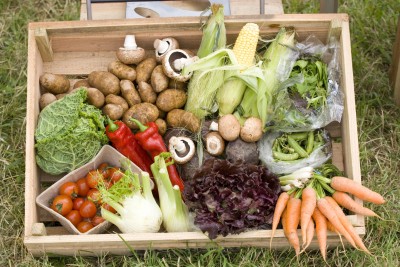Whole Food Definitions – Seed? Vegetable? Free Range?
 What are whole foods?
What are whole foods?
Whole foods are natural foods that are unprocessed or processed very little. They are generally lower in calories and have higher nutritional value than processed foods. But with all of the different terms out there what is a legume really, what foods are fruits, and which are actually vegetables? Here are a few simple definitions to clear things up.
Fruits:
Fruits are actually the part of a plant that contains the seeds. For fruits to be eaten, the plant generally doesn’t need to be cut down and can remain living because we are not actually eating the plant itself, only it’s fruit. Humans and plans that produce fruit have a unique relationship in that by eating a piece of fruit, we gain nutrition and we also help the plant’s seeds move to new areas away from the plant, which helps the plant reproduce. So, any food that has seeds in it is a fruit. From a culinary prospective, we generally consider only the sweet fruits to be fruits.But along with berries, apples, and peaches, tomatoes, avocados, cucumbers, squashes, and even nuts and beans are technically speaking all fruits. Fruits are usually high in fiber, and micronutrients, vitamins and minerals.
Vegetables:
Vegetables are actually part of the plant itself and don’t contain the plant’s seeds. So any food that are the actual leaf, stem, root, or flower of the plant are technically all vegetables. Potatoes, broccoli, greens, onions, garlic, and artichokes are all considered vegetables. Vegetables are generally high in fiber, micronutrients, vitamins, and minerals.
Fungi:
Fungi such as mushrooms and truffles are actually not fruits or vegetables, but a category all their own. They are high in micronutrients, vitamins and minerals and are usually very low calorie.
Seeds, legumes, beans:
Seeds are actually the reproductive part of the plant and contain the genetic material for a plant to reproduce, nourishment for the baby plant, and a protective outer covering. Seeds are generally high in protein, fiber, and micronutrients. Beans, peas, lentils, nuts, and grains all fall under this category.
Grains:
Grains are seeds that are actually the fruit of grasses. Wheat, millet, corn, rice, barley, oats, quinoa, and buckwheat are all grains. Grains are generally higher in carbohydrates and lower in protein than other seed foods. Grains are often ground and mixed with other ingredients to produce foods like breads and pastas, or can be eaten whole like corn on the cob. For a food to be considered whole grain, it must be ground or eaten with the outer coverings of the seed included. This outer covering is a nutritious part of the grain and contains much of the fiber and micronutrients. Non whole grain foods like white flour bread and pastas and white rice have this highly nutritious part stripped away leaving a less nutritious calorie dense food.
Animal Foods:
- “Organic” - For a food to be labeled as Organic it must meet certain strict requirements. It cannot use any synthetic chemical pesticides, fertilizers, or hormones in production, no irradiation, industrial solvents, chemical food additives, and cannot be genetically modified. For Organic Meat, dairy, and eggs, the animals are only fed organic feeds. This doesn’t necessarily mean the animals were Free Range or treated humanely. If a label says “Made with Organic…” it probably contains some non-organic ingredients too.
- “No Antibiotics” - This doesn’t necessarily mean Organic, but does mean that the animal had n0 antibiotics for it’s entire life.
- “Hormone Free or Natural Chicken or Pork” - In the US it is actually illegal for producers to use hormones in chicken or pork, so this isn’t any more healthy and doesn’t mean it’s Organic or Free Range.
- “No Artificial Hormones” - For eggs, beef, and milk, this means exactly what it says, that the animals were not given artificial hormones. It doesn’t mean that the animals weren’t given extra natural hormones to cause them to produce un-natural amounts of milk, eggs and meat…
- “Free Range or Pasture Raised” - There are currently no official regulations for what the definition of these terms are, but in general, it means that the animals had access to the outdoors and the ability to exercise and forage for foods that are their natural diet.
- “Grass Fed” - There are some regulations about the term grass fed and in general, it indicates that the animal has been fed primarily by pasture grass, was exercising, and is fed very little, or no other feed at all.
Choosing whole foods can go a long way to promoting health and maintaining a healthy weight and avoiding lifestyle related conditions. The less processed and natural foods are, generally, the better they are for us to eat. Make nutrition and organic whole foods a foundation to your wellness routine.
Browse our Merchant Directory to include the assistance of a Nutrition expert, Personal Trainer, Holistic Health Services, Lifestyle Coach, or to find Healthy Food options.
Sources: Michael Pollan In Defense of Food, Wikipedia, CDC
Author: Tony Montijo, BS Kinesiology, CPT, CES






